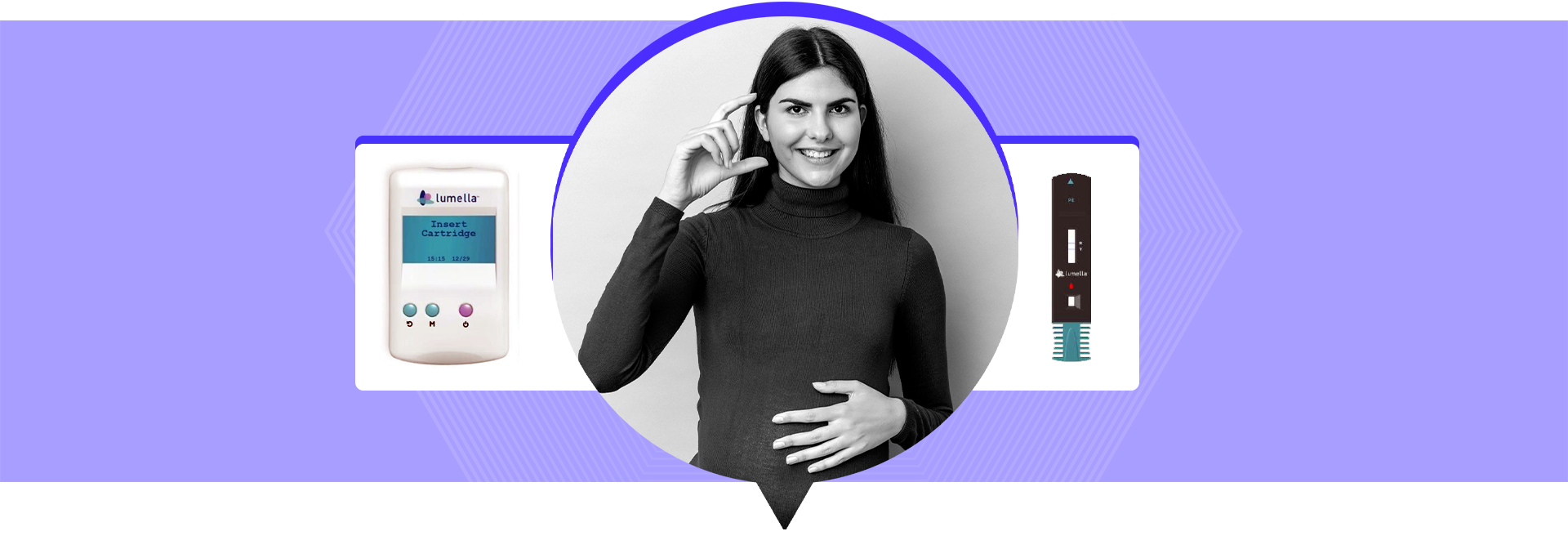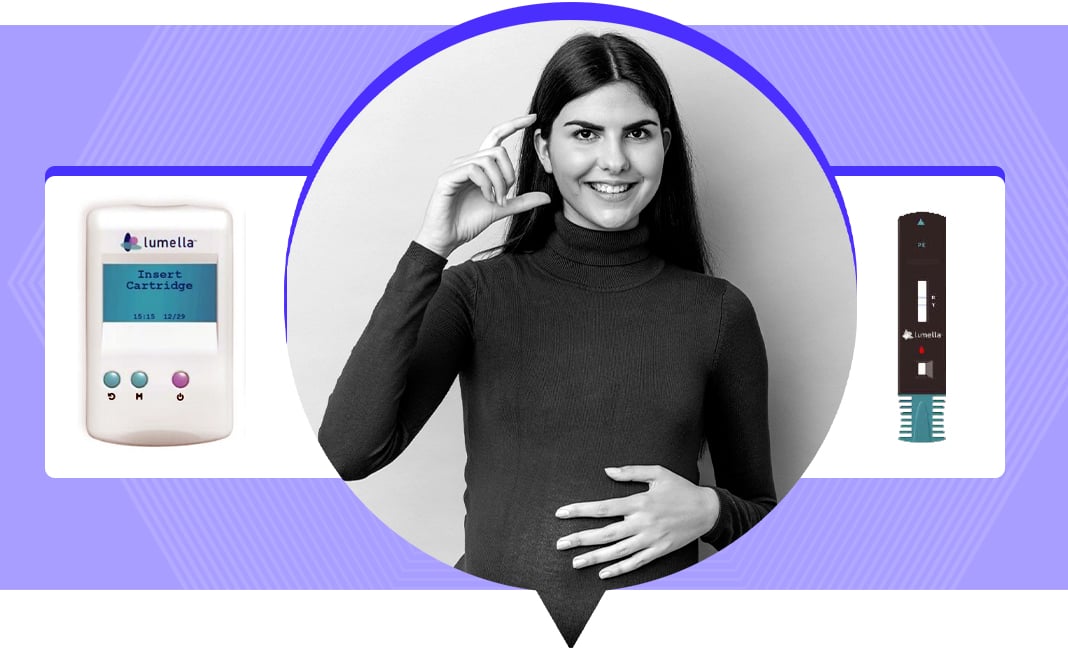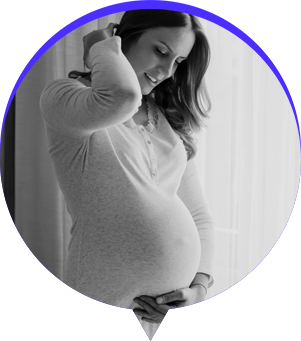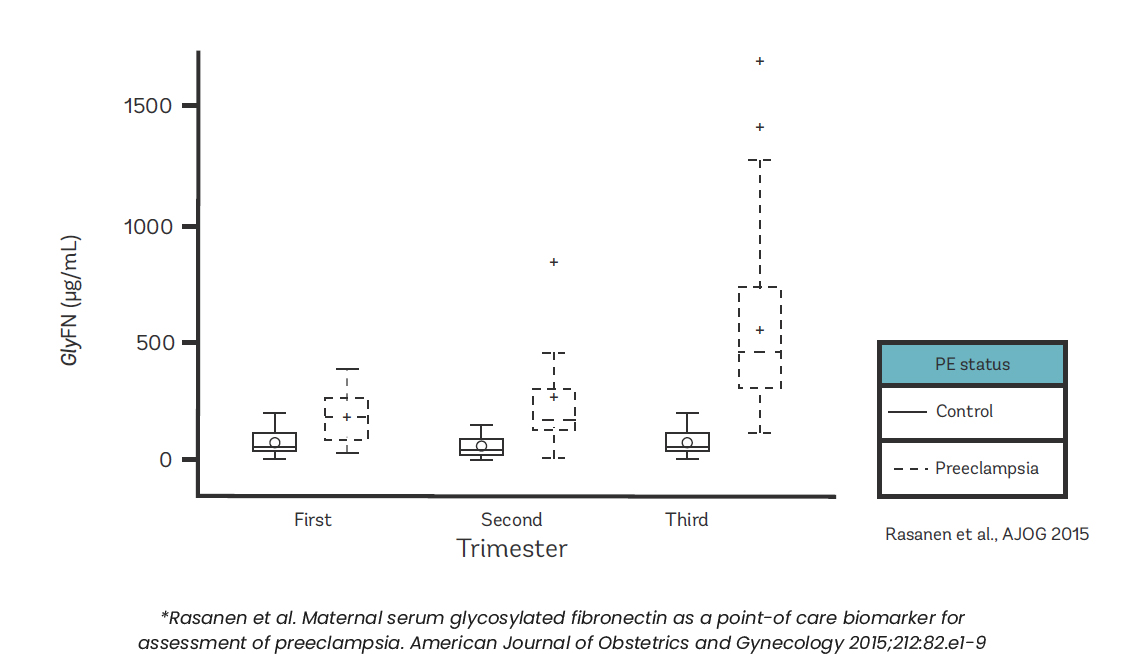

I am interested in booking my lumella
Introducing the rapid point-of-care
test in early detection of preeclampsia
Early & Effective Screening can help save lives
Testing period: Gestational age 13-37 weeks
The Lumella test estimates the concentration of Glycosylated Fibronectin, a new pregnancy specific biomarker to accurately assess the risk of preeclampsia

Measures glycosylated fibronectin (GlyFN)

Uses 5 μL finger prick blood sample

Results in 10 minutes
Early Symptoms of Preeclampsia are often too Ambiguous for Accurate Clinical Stratification
Clinical presentations often involve uncertain indications of hypertension and proteinuria
Less than 40% of women exhibit both hypertension and proteinuria before the development of overt preeclampsia
Preeclampsia progression is unpredictable and often complicated by adverse outcomes
The Lumella® GlyFN Test is intended as an aid in the diagnosis of women with suspected Preeclampsia.

| Normal GlyFN | 50-250μg/mL | Correlated with normal pregnancy with high sensitivity of 98.2% and high Negative Predictive Value of 99.4% |
| Positive GlyFN | 351-600 μg/mL | Correlated with biochemical diagnosis of preeclampsia with 98% Positive Predictive Value |
| High Positive GlyFN | >600 μg/mL | Correlated with risk of severe preclampsia with 99% Positive Predictive Value |

